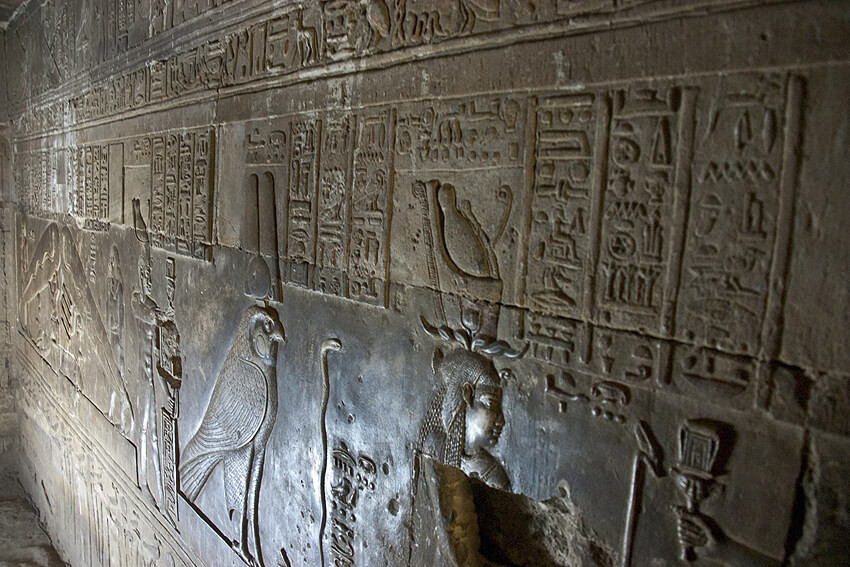In the heart of Egypt, amidst the ancient wonders of Dendera Temple, a peculiar relief has captured the imagination of many. Carved into the stone walls, a series of enigmatic symbols bear an uncanny resemblance to modern-day light bulbs, sparking speculation and theories about advanced ancient technology.
The Allure of the “It Looks-Like” Fallacy

The “It Looks-Like” method of interpretation has been a seductive trap for those seeking to unravel the mysteries of the past. This approach, which relies solely on visual resemblance, has fueled beliefs that the ancient Egyptians possessed knowledge of electrical systems and wireless energy transmission, akin to the groundbreaking work of Nikola Tesla.
Debunking the Myth
The Lack of Evidence
However, this interpretation fails to withstand scrutiny when examined through the lens of archaeological evidence and linguistic context. The absence of soot or smoke residue, often cited as proof of advanced lighting technology, can be explained by the use of ventilation systems and oil lamps that produce minimal soot. Furthermore, the lack of similar “light bulb” imagery or evidence of electrical systems elsewhere in ancient Egyptian sites casts doubt on the theory of widespread technological advancement.
Deciphering the Hieroglyphs
The true meaning of these symbols lies not in their visual resemblance but in the accompanying hieroglyphic inscriptions. These inscriptions speak not of technological manuals but of well-understood Egyptian religious concepts and mythologies. They describe the “words of Har Sema Tawy,” a reference to the pharaonic ideology of uniting Upper and Lower Egypt, a recurring theme in Egyptian iconography wholly unrelated to electricity or light bulbs.

The Symbolism Unveiled
Lotus Flowers and Djed Pillars
To comprehend the reliefs at Dendera, one must delve into the rich tapestry of ancient Egyptian cosmology and religion. Symbols like the lotus flower, falcon, Djed pillar, and protective bubble represent concepts of rebirth, stability, and divine protection – not electric light bulbs or Tesla coils. The Djed pillar, often misinterpreted as a Tesla coil, is a symbol of stability associated with the god Osiris, while the lotus flower represents creation, rebirth, and the sun’s cycle.
Sacred Barques and Celestial Voyages
The sacred barques depicted in the reliefs are not depictions of ancient energy systems but ritualistic representations of the gods’ travels, used in ceremonial processions. These barques symbolize the divine journey through the sky and the underworld, a central theme in Egyptian mythology.

The Wisdom of Context
In the end, the Dendera “light bulb” relief serves not as evidence of advanced technology but as a testament to the rich spiritual and symbolic world of the ancient Egyptians. It is a reminder that archaeological interpretations must be grounded in cultural and historical context, lest we fall victim to the allure of misguided theories and misinterpretations.

By embracing the wisdom of context and rejecting the “It Looks-Like” fallacy, we can unravel the true mysteries of the past, appreciating the artistic and religious sophistication of ancient civilizations without the need for far-fetched technological claims.
